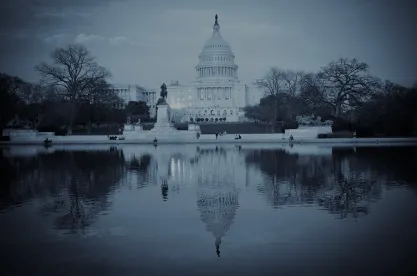A note from Jim: It is with a heavy heart that I must inform our readers that Hal Coxson passed away on April 18, 2019. Hal was a great man, a fantastic and faithful friend, and a giant in the labor policy arena. Hal welcomed me with open arms when I first strode into the labor policy world 10 years ago in Washington, D.C., and helped guide me through various legal and political battles along the way. I jumped at the opportunity to work by his side when he subsequently recruited me to join Ogletree Deakins. It was an honor to co-chair the firm’s Governmental Affairs Practice Group with him. (Indeed, this publication was his idea.) I will miss him dearly.
EEO-1 Update.
Like an army of frozen zombies descending on the North, the EEO-1 wage collection matter will not die, and its arrival is becoming more imminent with each passing day. On April 16, 2019, the U.S. District Court for the District of Columbia held a hearing to evaluate the competing claims regarding the Equal Employment Opportunity Commission’s (EEOC) ability to collect wage and hours worked information from employers. Judge Tanya Chutkan did not make a final determination on the matter, but she did instruct the parties to submit proposed orders by April 22. Kiosha H. Dickey has all the details. Stay tuned: winter is coming.
Regulatory Memo.
Late last week, the Office of Management and Budget (OMB) issued a memorandum intended to provide Congress with broader Congressional Review Act (CRA) authority over agencies’ regulatory activities. First, the memo reconfirms that guidance documents are subject to the CRA (such as the EEOC’s 2012 Enforcement Guidance on the Consideration of Arrest and Conviction Records in Employment Decisions Under Title VII of the Civil Rights Act of 1964). Second, the memo seeks to establish a uniform policy for determining whether a regulatory action should be classified as a “major” action under the CRA and therefore subject to an expedited review procedure by Congress. This means that both cabinet-level agencies and independent agencies must submit their regulatory actions—a “traditional” rule, guidance document, statement of policy, etc.—to the Office of Information and Regulatory Affairs (OIRA) for review. The memo further requires that such submissions for review be accompanied by economic impact analyses in order for OIRA to determine whether the activity may be considered “major.” Ultimately, the memo represents the administration’s continued effort to centralize and reduce the federal regulatory apparatus.
Restroom Brakes.
During the previous administration, the National Labor Relations Board (NLRB) was sometimes criticized for stretching the bounds of Section 7 to protect employee activity that most people would probably consider to be pretty darned offensive or intimidating. Since Republicans took control of the Board in 2017, they have been taking steps to change this interpretation, and a recent decision continues this new trend. The matter involved an employee who was discharged for using vulgarity while complaining about customers in a bathroom that was open to both the public and customers (and then subsequently lying about the incident). An NLRB administrative law judge (ALJ) ruled that the employee’s actions were protected concerted activity under the National Labor Relations Act (NLRA). But in a 3–0 decision (that included Democrat Board Member Lauren McFerran), the Board overruled the ALJ and held that the bathroom commentary was not protected because it did not contemplate future action and was “mere ‘griping.’” This is a good decision for employers and a victory for common sense.
OFCCP Proposes Changes to Compliance Letters.
On April 12, 2019, while requesting OMB reauthorization of its reporting and recordkeeping requirements for federal contractors, the Office of Federal Contract Compliance Programs (OFCCP) proposed changes to its scheduling letter, compliance check letter, and focused review letter. The proposed changes would require covered contractors to submit new information—such as the names of their largest subcontractors and the “[r]esults of the most recent analysis of the compensation system(s)”—which may potentially raise privilege issues. The new proposed letters can be viewed here. Stakeholders have until June 11 to comment on the proposed changes.
BAHA EO Listening Session.
On April 18, 2019, on the two-year anniversary of President Trump’s “Buy American, Hire American” executive order (BAHA EO), United States Citizenship and Immigration Services (USCIS) held a listening session to “enable USCIS to determine the effectiveness of its efforts to implement the BAHA EO.” Speakers included USCIS Director L. Francis Cissna; Molly Conway (acting assistant secretary, Employment and Training Administration; deputy chief of staff, U.S. Department of Labor); Keith Sonderling (acting administrator of the Wage and Hour Division), and other government officials, academics, and workers. Much of the session recounted the administration’s efforts to reform the H-1B visa program. While the listening session did not specifically address future regulatory action, it was clear that scrutiny of the H-1B visa program will continue to be a priority for the administration.
Wagner Act Anniversary.
Late last week—April 12, 2019, to be exact—marked the 82nd anniversary of the Supreme Court of the Unites States’ decision in National Labor Relations Board v. Jones & Laughlin Steel Corp. The case is famous for upholding the constitutionality of the 1935 Wagner Act—or NLRA—which established the NLRB and provided collective bargaining rights for employees. After being ordered by the Board to rehire unlawfully terminated employees, Jones & Laughlin Steel challenged Congress’s authority under the Commerce Clause of the U.S. Constitution to pass the act in the first place. In rejecting the challenge, the Supreme Court ruled that “we have no doubt that Congress had constitutional authority to safeguard the right of respondent’s employees to self-organization and freedom in the choice of representatives for collective bargaining.” The Board celebrated this important anniversary in appropriate fashion—with not one, but two cakes!




 />i
/>i
